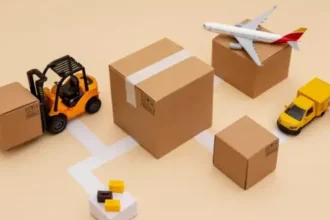Moving to a new home should be exciting, but for many people, it feels overwhelming. Boxes pile up, deadlines loom, and stress levels rise. The good news? It doesn’t have to be this way. With the right planning and a solid checklist, you can turn your move into a smooth, organized process. This guide will walk you through everything from the first planning steps to settling into your new space. Whether you’re moving across town or across the country, these tips will help you stay on track and keep your sanity intact.
Start Planning Early for Success
The secret to a stress-free move is simple: start early. Rushing at the last minute leads to mistakes, forgotten items, and unnecessary chaos. Give yourself a head start, and you’ll thank yourself later.
Give Yourself Enough Time
Begin planning at least six to eight weeks before your moving day. This gives you plenty of time to handle all the details without feeling rushed. Create a moving binder or folder where you can keep all your important documents, receipts, and checklists in one place. Write down key dates and deadlines so nothing slips through the cracks.
Set Your Moving Budget
Moving costs add up quickly. Before you do anything else, figure out how much you can spend. Include everything: moving truck rental, packing supplies, gas, insurance, and even tips for helpers. Don’t forget the hidden costs like cleaning supplies for your old place or takeout meals on moving day. Keep all your receipts in your moving binder. Some moving expenses might be tax deductible, especially if you’re relocating for work.
Choose the Right Help
One of your first big decisions is whether to hire professionals or do it yourself. Both options have benefits. Professional movers save you time and heavy lifting, while a DIY move saves money but requires more work from you and your friends.
If you decide to hire help, get quotes from at least three different companies. Whether you’re looking for experienced Removalists Central Coast or planning to handle the move yourself, making this decision early helps you plan better. Check online reviews, ask about insurance, and make sure the company has proper licenses. A reliable moving company can make your relocation day much smoother and less stressful.
Declutter Before You Pack
Before you start putting things in boxes, take time to sort through what you own. Moving is the perfect chance to lighten your load and start fresh in your new home.
Sort Through Your Belongings
Go through your home room by room. Pick up each item and ask yourself: Do I really need this? A good rule to follow is the one-year rule. If you haven’t used something in over a year, you probably don’t need it. Create four piles: keep, sell, donate, and throw away. Be honest with yourself during this process.
Lighten Your Load
The less you move, the easier and cheaper your relocation becomes. Fewer boxes mean less packing time, lower moving costs, and quicker unpacking. Plus, you’ll have less clutter in your new home. Sell valuable items online through apps or websites. Host a garage sale for everything else. Donate gently used items to local charities. Your unwanted items might be treasures for someone else.
Smart Packing Strategies
Packing doesn’t have to be a nightmare. With the right approach and supplies, you can pack efficiently and protect your belongings.
Gather the Right Supplies
Before you start packing, collect all the materials you’ll need. Stock up on sturdy boxes in various sizes, packing tape, bubble wrap, packing paper, and permanent markers. You can buy boxes from moving companies, but you can also get free ones from grocery stores, liquor stores, or office supply shops. Just make sure they’re clean and strong enough to hold your items.
Pack Room by Room
Don’t jump around the house randomly throwing things in boxes. Work on one room at a time. Start with rooms you use less often, like guest bedrooms, the garage, or storage areas. Save the kitchen and bathrooms for last since you’ll need these items until moving day.
Pack heavy items like books in small boxes so they’re easier to carry. Use larger boxes for lighter things like pillows, blankets, and clothes. Keep similar items together. All your kitchen items should go in kitchen boxes, bedroom items in bedroom boxes, and so on. This makes unpacking much easier.
Label Everything Clearly
Labeling is one of the most important packing steps. Use a thick marker to write on at least two sides of each box. Include the room name and a brief list of contents. For example: “Kitchen – Pots and Pans” or “Master Bedroom – Bedding and Pillows.”
Consider using colored tape or stickers for each room. Red for the kitchen, blue for the bedroom, green for the living room. This system helps movers know exactly where each box goes. Mark boxes containing fragile items with big, clear warnings. Create a simple inventory list numbering each box and noting what’s inside.
Prepare for Moving Day
The days leading up to your move are crucial. Taking care of these tasks ahead of time prevents last-minute scrambling.
Pack Your Essentials Box
Pack a special box with everything you’ll need for the first 24 hours in your new home. Include toiletries like toothbrushes, soap, and towels. Add a change of clothes for each family member and any medications you take daily. Don’t forget phone chargers, important documents, keys, and some basic tools. Throw in snacks, bottled water, and paper plates. Keep this box with you, not in the moving truck.
Get Ready the Night Before
The night before moving day, do a final check of everything. Make sure your phone is fully charged. Set multiple alarms so you wake up on time. Try to get a good night’s sleep, even though you might feel excited or nervous. Eat a healthy breakfast in the morning to keep your energy up. If you hired movers, confirm the time they’ll arrive and make sure you have their contact information handy.
Handle Utilities and Address Changes
Contact your utility companies to schedule disconnection at your old home and connection at your new one. This includes electricity, gas, water, internet, and cable. Submit a change of address form with the post office so your mail gets forwarded. Update your address with banks, credit cards, insurance companies, doctors, and your employer. If you have kids, arrange to transfer school records. Don’t forget about your pets’ vet records too.
Moving Day Success Tips
The big day has arrived. Stay calm, stay organized, and remember that everything will get done.
Start Early and Stay Organized
Wake up early to give yourself plenty of time. Do a final walk-through of your home to make sure nothing got left behind. Check all closets, cabinets, and drawers. Look in the garage, attic, and basement. Keep important items like your wallet, keys, phone, and essentials box with you at all times. Never pack these in the moving truck.
Clear Pathways
Make the job easier for everyone by clearing paths through your home. Remove any obstacles between rooms and the moving truck. Prop doors open so people don’t have to stop and open them with full hands. If you’re moving in winter, shovel snow or spread salt on icy walkways. Protect your floors with old sheets or cardboard. Point out any tricky spots to your movers, like tight corners or low doorways.
Stay Comfortable
Moving day is physically demanding. Wear comfortable clothes that you can move freely in. Choose closed-toe shoes with good support. Flip-flops and sandals are dangerous when carrying heavy boxes. Keep water bottles handy and drink regularly. Take short breaks when you need them. Have snacks available for quick energy boosts. Don’t push yourself too hard. It’s better to take an extra break than to hurt yourself.
Settle Into Your New Home
You made it! Now it’s time to turn your new house into a home.
Unpack Strategically
Don’t try to unpack everything in one day. Start with the rooms you’ll use most: the kitchen, bedrooms, and bathrooms. Set up all the beds first so everyone has a place to sleep that night. Get the kitchen functional so you can make simple meals. Unpack your bathroom essentials next. Everything else can wait. Take your time with books, decorations, and other non-essential items.
Make It Feel Like Home
Once the basics are unpacked, add personal touches that make the space feel like yours. Hang pictures on the walls. Put out your favorite decorations. Set up your living room in a way that feels comfortable. Take some time to explore your new neighborhood. Find the nearest grocery store, pharmacy, and gas station. Walk around and get familiar with the area. If you feel comfortable, introduce yourself to your neighbors. Building connections in your new community helps you feel settled faster.
Conclusion
Moving doesn’t have to be a stressful nightmare. With early planning, smart packing, and a solid checklist, you can handle your relocation smoothly. Remember to start planning weeks in advance, declutter before you pack, label everything clearly, and prepare thoroughly for moving day. Take care of yourself during the process, ask for help when you need it, and give yourself time to settle in. Your new home is waiting. With these tips in your toolkit, you’re ready to make your move a success. Start planning today, and soon you’ll be relaxing in your new space, proud of how smoothly everything went.

















